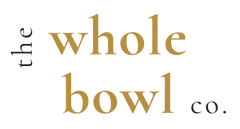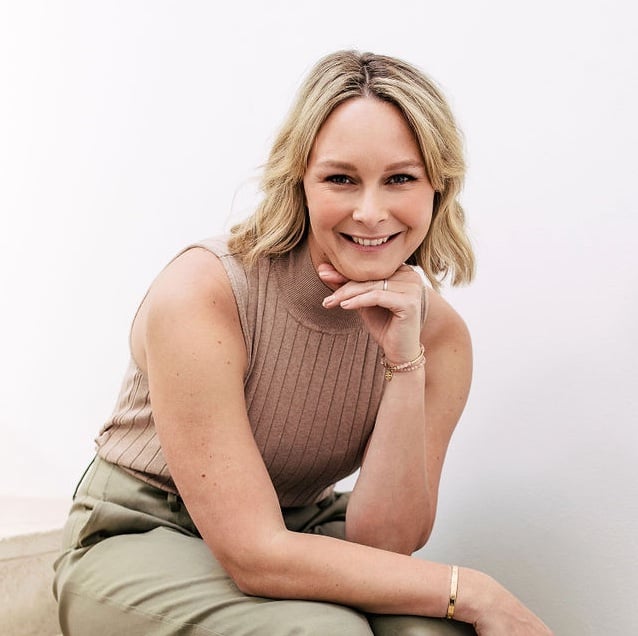The Best First Foods for Babies
There are so many things to consider when starting solids. The whole processes can feel a little overwhelming and scary. It may feel like there is a lot of conflicting information out there. That’s because many books and resources on starting solids are outdated, including what your mother or mother-in law suggests! In 2012, the infant feeding guidelines in Australia were updated from the 2003 version. The World Health Organisation also has its own set of infant feeding guidelines, as does every country in the world which recommendations are largely based on not only science but culture. There are a few key foods that should be emphasised and are really important to start with from both a nutritional and allergy prevention perspective.
Iron Rich Foods
By the time your baby is 6 months, their iron stores will become deplete. They have survived until now on this stored iron in their liver which they accumulated from their mother, while in utero. Breast milk is a poor source of iron so by the time they are 6 months, it’s really important to include iron rich foods as part of first.(1)
Iron is an essential mineral found in the blood and is responsible for transporting oxygen around the body. For babies, iron is necessary for optimal growth, development, cognition, motor development and plays a vital role in immunity. (2)
There are two types of iron found in food:
1. Haem iron is found in animal foods and is well absorbed by the body.
Meats and darker cut of poultry are source of haem iron e.g. thighs are my go-to iron rich foods for babies. You can add ground or soft slow cooked meats to vegetable puree base.
Examples of haem iron sources:
· 100g beef=3.5mg
· 100g lamb= 2.5mg (3)
2. Non-haem iron is found in plant foods which is less bioavailable.
Plant-based sources of iron are generally less bioavailable and contains less iron per serving size but are still valid sources. Lentils, green leafy vegetables and iron fortified cereals are among some of the richest source of non-haem iron.
Examples of iron in plant-based foods:
· ½ cup green lentils= 1.5mg (3)
· 100g green leaves =2.6mg
Allergenic Foods
When looking at the best first foods for babies, the next most important thing to offer them from six months may come as a surprise. Allergenic foods are probably the last thing you would consider giving your baby. But based on the most up to date research, the updated Australian Infant Feeding Guidelines and the World Health Organization recommendations, the introduction of potentially allergenic foods including peanuts, tree nuts, cow's milk, egg, soy, wheat, fish, and shellfish, should be included as first foods. (4) Scary right?! Let me break it down for you.
They are potentially allergenic foods and will not cause allergies in all babies. If your baby is otherwise healthy, there are no siblings or biological parents with food allergies or signs of atopy, including eczema or asthma, the chances your child will be allergic are low. (1)
The best thing you can do to prevent your baby from developing allergies to these foods is to give them exposures from when they start solids and continue to offer these foods, if they are tolerated. Breastfeeding while introducing solids also improves tolerance and there is some research that certain probiotics strains may help also. (5)
The amount of allergenic foods you give your baby doesn’t have to be massive. They are exposures, so small amounts can be given initially and if tolerated these foods should be offered regularly. Many of these allergenic foods are dense source of essential nutrients. Shellfish, fish, eggs and nuts are all rich in zinc which is essential for growth, omega 3 fatty acids and choline which support optimal brain development. These foods aren’t all “bad” and offer massive nutritional benefits so shouldn’t be excluded unnecessarily. See below for ideas on introducing allergenic foods.
|
|
Puree Method (from 4 months) |
Baby Led Weaning (only from 6 months) |
|
Peanut + Tree Nuts |
Add a little nut butter to fruit or vegetable-based puree. |
A thin spread of smooth nut butter on a finger food e.g. Bread, soft vegetables or fruit |
|
Soy |
Add edamame beans or tofu to purees |
Well-cooked and halved edamame beans, natto or tofu cubes. |
|
Cow’s Milk |
Add some unsweetened yogurt or cottage cheese to puree, or a splash of milk added to foods such as porridge. |
Unsweetened yogurt, cottage cheese or feta spread thinly on bread. |
|
Shellfish |
Add well-cooked prawns, scallops, muscles or tinned oyster meat to a vegetable puree. |
Small pieces of well-cooked prawn, scallops or tinned oysters. Be cautious with muscles are they can be very stringy and a potential choking hazard. |
|
Fish |
Boneless white fish such as flathead or john dory is easy to add to purees. |
Piece of boneless fish flaked into finger size pieces. |
|
Egg |
I generally advise starting with the egg yolk, as this is the most nutrient dense part. Add ¼ well-cooked eggs to puree or serve scrambled eggs. |
Boiled eggs, frittata, omelet chopped into pieces, or scrambled eggs. |
|
Wheat |
Make a porridge using some whole rolled wheat (pureed), or risoni pasta added to a puree or baby meal. |
Bread or toast, whole wheat porridge (pureed) or whole wheat pasta (very soft) |
Vegetables
And finally, the food you probably thought I would mention first!
Vegetables are the perfect carrier and combination with iron rich and potential allergenic food exposure. Offering a variety of vegetable is key. Your baby will most likely love sweet vegetables like pumpkin, carrot and sweet potato. Be sure to include more bitter tastes and green vegetable like broccoli, cooked spinach and rocket too when looking at the best first food for babies.
Conclusion
When looking at the best first foods for babies, it’s important to keep in mind that there is no right or wrong way to introduce solids to your baby, it’s what works for you and your baby. I would introduce iron rich foods first along with vegetables, then once you’ve got a handle of that (~1-2 weeks) start those potentially allergenic food exposures.
Brittany Darling
Brittany Darling is a multi award winning accredited clinical nutritionist and herbalist. Brittany has been working with fertility, pregnant and paediatric clients for over a decade in her Sydney based clinic. Additionally, she is the founder of children’s supplements, I’m Nutrients and co-founder of Eius Fertility supplements. She is a go-to expert in the media including Body & Soul, Gourmet Traveller, and Women’s Health.
1. NHMRC. Infant Feeding Guidelines Information for Health Workers [Internet]. Australian Government; 2012. Available from: https://www.nhmrc.gov.au/about-us/publications/infant-feeding-guidelines-information-health-workers
2. Jacquelyn M Powers, MD, MSDonald H Mahoney, Jr, MD. Iron deficiency in infants and children <12 years: Screening, prevention, clinical manifestations, and diagnosis [Internet]. UpToDate; 2020 Mar [cited 2020 Mar 12]. Available from: https://www.uptodate.com/contents/iron-deficiency-in-infants-and-children-less-than12-years-screening-prevention-clinical-manifestations-and-diagnosis
3. Iron Fact Sheet [Internet]. Nutrition Australia; 2014 [cited 2020 Mar 12]. Available from: https://www.nutritionaustralia.org/national/resource/iron
4. Du Toit G, Roberts G, Sayre PH, Bahnson HT, Radulovic S, Santos AF, et al. Randomized Trial of Peanut Consumption in Infants at Risk for Peanut Allergy. N Engl J Med. 2015 Feb 26;372(9):803–13.
5. Berni Canani R, Di Costanzo M, Pezzella V, Cosenza L, Granata V, Terrin G, et al. The Potential Therapeutic Efficacy of Lactobacillus GG in Children with Food Allergies. Pharmaceuticals. 2012 Jun 19;5(6):655–64.

